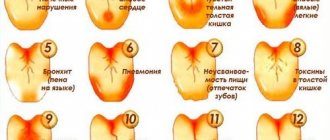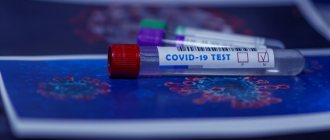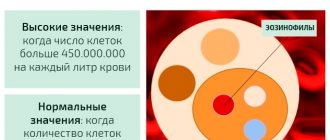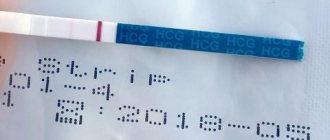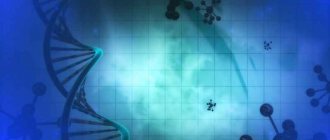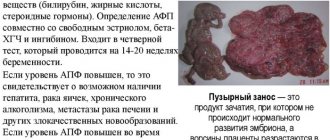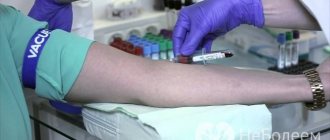Leukopenia is a condition in which the number of white blood cells (leukocytes) in the blood decreases. Its reasons are very different. Leukopenia can occur both normally (physiological) and in various diseases (pathological).
Our expert in this field:
Sergeev Pyotr Sergeevich
Deputy chief physician for medical work, oncologist, surgeon, Ph.D.
Call the doctor
Leukopenia is considered to be a decrease in the content of leukocytes in the blood below 4000 in 1 microliter.
General information
Leukopenia is a condition characterized by a decrease in the number of leukocytes per unit volume of blood.
It is determined if the number of leukocytes is less than 4000 in 1 μl of blood. Also, with leukopenia, the motor activity of mature neutrophils and their release into the blood from the bone marrow is impaired (this condition is called “lazy leukocyte” syndrome). The ICD-10 code for leukopenia is D72 (other white blood cell disorders). Speaking about what it means that the level of leukocytes in the blood is below normal, it should be noted that severe leukopenia is evidence of a violation of the normal process of hematopoiesis. If leukocytes in the blood are low, this means that the causes of this phenomenon may be serious pathologies. However, leukocytopenia can also develop due to other reasons - the influence of a number of drugs, radioactive exposure, lack of vitamins . This condition is sometimes associated with a hereditary factor. Sometimes the number of white blood cells can be reduced in healthy people.
Why a person can develop leukopenia, how it manifests itself, and how to treat this pathological condition will be discussed in this article.
What are leukocytes?
Leukocytes are white blood cells that vary in function and appearance. They are produced in the red bone marrow and last from several hours to several years. Their main function is to protect the body from attacks by infectious agents, foreign bodies, and foreign proteins. Leukocytes provide specific and nonspecific protection against pathogens, both external and internal.
Leukocytes are detected not only in the blood, but throughout the body, including in the lymphatic system. Their content in the blood varies at different times of the day. Their quantity also depends on the state of the body.
Some leukocytes can capture and process foreign microorganisms (the process of phagocytosis ), and another part produces antibodies .
Leukocytes are divided into several types:
- granular (granulocytes) - they, in turn, are divided into neutrophilic, eosinophilic and basophilic;
- non-granular (agranulocytes) - this category includes lymphocytes and monocytes.
The leukocyte formula is the ratio of different types of white blood cells.
Eosinophils are white blood cells that contain a bilobed nucleus and granules that stain red with eosin.
These cells regulate allergic reactions.
Pathogenesis
The pathogenesis of leukopenia is determined by three main mechanisms. The essence of the first is the inhibition of the leukopoietic function of the bone marrow, as a result of which the production of leukocytes, their maturation and release into the peripheral blood are disrupted. The second mechanism is excessive destruction of cells in the vascular bed. The third is the redistribution of leukocytes in the blood and their retention in the depot organs.
Neutropenia is a process in which there is a decrease in the production of neutrophils in the bone marrow. This occurs due to impaired proliferation, differentiation and maturation of hematopoietic stem cells. This process occurs under the immune and myelotoxic influence of toxic substances and medications. It is also caused by the presence of an internal defect in the precursor cells of granulocytopoiesis, when there is a loss of their ability to differentiate into cells of the neutrophil series and at the same time the ability to normal differentiate into basophilic, eosinophilic and monocytic cells is preserved.
Bone marrow production of neutrophils also decreases due to a decrease in the bridgehead of granulocytopoiesis, which is noted when hematopoietic cells are displaced by tumor cells in patients with leukemia and carcinosis (with metastases to the bone marrow). The reason for this may also be a lack of those substances that are necessary for the normal process of proliferation, differentiation and maturation of these cells. This is a series of vitamins, amino acids , etc.
Neuropenia may also be associated with the active destruction of neutrophils, which occurs under the influence of antibodies that are formed in the case of blood transfusion due to exposure to certain medications. The mechanism of development of this condition may also be associated with the development of diseases that are accompanied by the growth of immune complexes circulating in the blood (lymphoma, tumors, autoimmune diseases, etc.). Also, the development of this condition may be associated with exposure to toxic factors during severe infectious diseases and inflammatory processes.
Neuropenia also develops as a result of too active destruction of neutrophils in the spleen. This occurs in a number of diseases, the distinctive feature of which is hypersplenism. Neutropenia as a result of the redistribution of neutrophils within the vascular bed is observed in neuroses, shock, acute malaria, etc. This condition is temporary and is replaced by leukocytosis .
Agranulocytosis is a syndrome in which neutrophil granulocytes in the blood disappear completely or almost completely. The mechanism of its development is most often associated with taking medications (sulfonamides, some antibiotics , cytostatic drugs, etc.).
Often the etiological factors leading to this condition remain unknown. The origin of agranulocytosis can be immune or myelotoxic. The pathogenesis of immune agranulocytosis is based on the appearance of antibodies, the action of which is directed against one’s own leukocytes.
Classification
If a patient has low white blood cells, this condition is classified depending on a number of indicators.
Taking into account the development mechanism, the following types of leukopenia are determined:
- Temporary (redistribution) - in this condition, leukocytes collect in the lungs and spleen.
- Constant (true) – associated with a decrease in the production of leukocytes due to a violation of their differentiation and maturation or with the accelerated destruction of leukocytes and their excretion.
Taking into account the reason for the development of this condition, the following types of leukopenia are determined:
- Infectious-toxic - develop due to the influence of poisons, the use of a number of drugs, infectious diseases, acute viral infections.
- As a consequence of the influence of ionizing radiation.
- As a consequence of systemic lesions of the hematopoietic apparatus.
- Deficient - develop due to insufficient intake of amino acids, proteins, and B vitamins into the body.
Depending on the characteristics of the course of leukopenia, the following are distinguished:
- Spicy.
- Chronic.
- Cyclic.
- Recurrent.
Depending on the type of leukocytes, the number of which decreases, the following types of this condition are determined:
- Neutropenia – the number of neutrophils decreases (< 1500/μl per microliter of blood).
- Eosinopenia – the number of eosinophils decreases (<0.05•109/l).
- Lymphopenia – there is a decrease in the number of lymphocytes (< 1000/μl).
- Monocytopenia – the number of monocytes decreases (<500/μl).
- Agranulocytosis is a condition in which granulocytopenia is noted against the background of severe leukopenia (less than 1•109/l).
In addition, the following types of this state are defined:
- hereditary and acquired;
- physiological and pathological.
Proper nutrition is an important component of treatment
The patient must help the doctors by following all the instructions, eating right and leading a healthy lifestyle. Nutrition for leukopenia should be balanced. The diet should contain foods that help increase the hematopoietic function of the bone marrow. Mussels, oysters and other seafood are very healthy. They are high in B vitamins, copper and beneficial amino acids. Greens (spinach, asparagus, celery), Brussels sprouts and broccoli should always be present on the table. Be sure to consume cheese and dairy products. It is advisable to consume more dishes made from beans, lentils, peas, pumpkin and beets. These are sources of folic acid. You should avoid fatty meats and fish, liver and kidneys. The consumption of rabbit and turkey meat is allowed. The liver of cod fish is useful.
Causes of leukopenia
Leukopenia in adults occurs due to a number of reasons. Therefore, when a person has low white blood cells, it is necessary to establish a diagnosis and determine the cause of the disease.
A decrease in leukocytes can be observed in the following diseases and conditions:
- Diseases of the bone marrow and blood cells - myelofibrosis , aplastic anemia , hypersplenism , myelodysplastic syndromes , myeloproliferative syndrome .
- Inherited conditions—low white blood cell counts may be present at birth. Such causes include Kostman's syndrome (congenital neutropenia) and the very rare disease myelocathexis .
- Infectious diseases - the white blood cell count decreases with tuberculosis , HIV or AIDS. This phenomenon is also typical for severe viral infections, including those that affect the bone marrow.
- Autoimmune diseases - the causes of leukocytopenia associated with such diseases are due to the fact that in such patients white blood cells or those bone marrow cells that produce them are destroyed.
- Lack of vitamins and minerals due to poor nutrition - the causes of low levels of leukocytes in the blood may be associated with a deficiency of vitamins B12 , zinc, and copper.
- The use of a number of medications - the number of white cells decreases with the use of a number of drugs, including: Clozapine , Cyclosporine , Minocycline , Sirolimus , Lamotrigine , Interferon , etc. A child may experience leukopenia after treatment with antibiotics.
- Sarcoidosis is a condition caused by an overactive immune response of the body. If granulomas form in the bone marrow, it can lead to leukopenia.
- Cancer and its treatment - leukemia and other types of cancer can lead to a decrease in the number of white blood cells due to damage to the bone marrow. Also, leukocytes below normal are detected in such patients after chemotherapy , radiation therapy, and bone marrow transplantation.
The causes of certain types of leukopenia may be associated with the following conditions:
- Neutropenia - can develop as a result of viral diseases, acute radiation sickness, bacterial infections, malaria , taking cytostatic drugs, hypersplenism, and a number of blood diseases.
- Eosinopenia is observed against the background of stress in women and men. It also develops as a result of taking glucocorticosteroids, malignant tumors, and a number of viral diseases.
- Lymphopenia – develops due to an excessive amount of glucocorticoids in the body, after radiation therapy, with immunodeficiency syndromes and lymphomas. This condition is typical for many chronic diseases. Lymphopenia is also often caused by the use of anti-lymphocyte globulin or cyclophosphamide.
- Monocytopenia - manifests itself due to excess glucocorticoids and bone marrow damage. The number of monocytes may decrease in the acute phase of an infectious disease, with exacerbation of tuberculosis , rheumatic carditis .
- Excretory leukopenia occurs with intensive emigration of leukocytes and their active elimination from the systemic circulation into the zone of chronic inflammation. A similar phenomenon is observed in chronic cholecystitis , gastritis , enteritis , inflammation of the mucous membrane of the respiratory tract, urinary and reproductive systems.
When should you see a doctor?
If fever, malaise and other signs of lymphopenia are detected, medical advice is necessary. Patients who require treatment should consult a doctor immediately and have their condition checked, especially if jaundice, bleeding or skin lesions occur. Inflammation, eczema and dilated capillaries should also be examined by a doctor as they may be a sign of a serious medical condition.
Lymphopenia usually develops slowly and causes obvious signs of the disease only at a late stage. Therefore, you should consult a doctor at the first sign of a blood disorder.
The risk group includes cancer patients, as well as patients suffering from pneumonia and other bacterial or viral diseases. Patients who have had rubella or severe inflammation should talk to their family doctor at the first sign of lymphopenia. He can diagnose the disease and, if necessary, refer to other specialists - a dermatologist, neurologist, otolaryngologist, oncologist, infectious disease specialist, and physiotherapists.
Symptoms of leukopenia
At the very beginning, the symptoms of leukopenia, as a rule, are not pronounced. However, over time, the pathology is reflected in cellular and humoral immunity , which leads to a general deterioration in the function of the immune system. During this period, cytopenia can provoke the development of the following symptoms:
- dizziness;
- headache;
- itching;
- feeling tired and weak;
- chills;
- sweating;
- rapid pulse;
- anxiety;
- increased body temperature;
- signs of exhaustion.
If a person has few white blood cells in the blood due to the use of certain medications, then the symptoms increase very quickly.
Subsequently, the patient's glands may swell. Later, the tonsils and spleen enlarge, and trophic ulcers . These signs are accompanied by symptoms of diseases that result in cytopenia .
The clinical manifestation of agranulocytosis is ulcerative necrotic tonsillitis as a result of suppression of the body's defense reactions.
Tests and diagnostics
To determine the number of leukocytes, a complete blood count is performed. If necessary, an additional study is also carried out with the differentiation of leukocytes in order to determine which white cells have a reduced number. In this way, you can exclude the probable causes of the development of leukopenia and move on to a more accurate diagnosis.
During the diagnostic process, leukopenia can be determined using the following studies:
- Hemogram - makes it possible to determine the absolute number of red blood cells, platelets, leukocytes, as well as determine the percentage of types of white cells.
- Immunological blood test - to determine anti-granulocyte and antinuclear immunoglobulins.
- Cytological examination allows one to differentiate leukopenia and establish the mechanism of their development.
- Biochemical blood test - determines the content of folate, cyanocobalamin, liver transaminases, bilirubin .
- Serological markers of hepatitis B and C.
A blood test for rheumatoid factor may also be done.
To get the most reliable result, repeat tests are carried out after some time.
How to increase your white blood cell level at home?
Treatment of leukopenia is most effective when drug therapy is supplemented with alternative traditional medicine. One of the best means for increasing the number of red and white blood cells is mumiyo. It is taken according to a special regimen, gradually increasing the dosage.
Shilajit intake regimen
- in the morning after waking up;
- before lunch (one and a half hours before);
- before bedtime.
Dosage:
- 0.2 g during the first ten days;
- 0.3 g - the next ten days;
- 0.4 g - in the last ten days.
After this, a break is required for 10 days.
Adults can cope with exhaustion and loss of strength by taking a 25% alcohol tincture of barberry roots or horehound flowers and leaves infused in light beer.
Recipe for making horehound tincture
Pour two tablespoons of dry plant into a liter of beer. Leave for 4 days. Strain. Drink a quarter glass before meals.
Leukopenia in children
First of all, it is important to take into account that in children the number of peripheral blood leukocytes directly depends on age. Therefore, leukopenia is determined if the child’s leukocytes are reduced by 30% from the average age norm.
Low white blood cells in a child’s blood can be detected in the following cases:
- For congenital immunodeficiency diseases of thymic origin.
- In the case of viral and some bacterial infections, as well as severe toxic and viral conditions accompanied by bone marrow suppression.
- With Shwachman-Diamond syndrome , a rare hereditary disease that causes pancreatic dysfunction and congenital neutropenia .
- With Kostman's syndrome, congenital severe neutropenia is noted, since neutrophils in this disease do not mature, as they should normally.
- For a number of other diseases, including: chronic granulomatous disease, myeloperoxidase , leukocyte adhesion deficiency, Chediak-Higashi syndrome .
- Also, leukopenia in children develops as a result of radiation therapy and chemotherapy, taking certain medications, autoimmune diseases, HIV, hepatitis .
When the white blood cell count is low, children may experience the following symptoms:
- Frequent development of infectious diseases affecting the lungs, paranasal sinuses, and ears.
- Mouth ulcers.
- abscesses .
- Periodontal disease.
- Fungal diseases.
- If there is a lack of leukocyte adhesion, wound healing slows down.
- Shwachman-Diamond syndrome causes chronic diarrhea , sometimes fatty.
Prognosis of lymphopenia
The prognosis of lymphopenia directly depends on the underlying disease. If lymphopenia occurs without other associated disorders, it may be asymptomatic and without serious complications.
The duration of the course depends on the causative disease. Treatment also depends on the cause and severity of the underlying disease. Most cases of lymphocytopenia do not require therapy. If lymphocytopenia causes severe infections, antibiotics or other treatments may need to be used.
During pregnancy
During pregnancy , leukopenia can develop due to various reasons. The danger of this condition during pregnancy, first of all, is that diseases that provoke a decrease in the level of leukocytes can affect the baby. Pathological conditions can lead to miscarriage and premature birth. Therefore, it is important for the expectant mother to regularly conduct blood tests in order to detect pathology in a timely manner. Regular blood tests of a pregnant woman also make it possible to identify other pathological indicators (lymphocytes are elevated, monocytes are elevated, etc.) and promptly prescribe treatment.
As a rule, when the level of leukocytes in pregnant women is low, the doctor prescribes treatment, depending on the pathology that provoked the problem.
It is important for the expectant mother to eat well, prevent the development of bacterial and infectious diseases, not overwork and lead an active lifestyle.
Clinical manifestations
At the initial stage of the disease, obvious signs of leukopenia are almost always absent. The patient may experience headaches, weakness, and dizziness. As a rule, no one pays attention to these signals, but the clinical picture continues to change rapidly at this time. Against the background of a weakened body, infection often occurs, which is accompanied by:
- migraines;
- fever;
- chills;
- increased heart rate.
Quite often, lesions of the gastrointestinal mucosa appear in the form of numerous ulcers and erosions, blood infections, and inflammatory processes in the oral cavity.
Attention should also be paid to the characteristics of the course of the disease. All infectious processes in the body are several times more severe. For example, slight irritation on the skin can lead to phlegmon. Very often after chemotherapy, damage to the spleen, liver and intestinal cells is observed. Any infection in this case becomes life-threatening for the patient. Thanks to a blood test, as a rule, not only leukopenia is detected. Thrombocytopenia, for example, almost always inevitably develops against the background of suppressed platelet production.
Diet
Diet for anemia
- Efficacy: no data
- Time frame: 3 months
- Cost of products: 2700-3200 rubles. in Week
With leukopenia, the patient should introduce the following products into the diet:
- Berries, fruits, vegetables, herbs.
- Whole grain porridge.
- Veal, rabbit, poultry.
- Nuts, honey, especially honey in combs.
- Legumes.
Under no circumstances should you adhere to low-calorie diets or fast, as this can only worsen the condition.
Consequences and complications
With a chronically low white blood cell count, the body becomes vulnerable to infectious diseases. In this condition, the immune system suffers, as a result of which the body’s protective functions are weakened.
With leukopenia, the likelihood of developing a tumor disease increases.
Another serious complication of this disease is agranulocytosis (a sharp decrease in granulocytes in the blood) and aleukia (bone marrow damage with inhibition of hematopoiesis and lymphopoiesis).
How dangerous is this disease?
Persistent leukopenia, according to doctors, leads to a decrease in immunity and a simultaneous increase in sensitivity to many infections and cancer, which often leads to death. The extreme manifestations of the disease are the following: agranulocytosis, neutropenia and aleukia. In this case, the body almost completely stops producing certain types of leukocytes.
List of sources
- Abdulkadyrov K.M. Hematology. Newest reference book / K.M. Abdulkadyrov - M.: Eksmo, 2004. - 928 p.
- Zaiko N.N. Pathological physiology / N.N. Zaiko [and others]; edited by N.N. Zayko. – Moscow, 2006. – P. 351-358.
- Chesnokova N.P., Nevvazhay T.A., Ponukalina E.V., Zhevak T.N., Polutova N.V., Bizenkova M.N. Lecture 1 Leukopenia: general characteristics, etiology, pathogenesis, features of hematological changes // International Journal of Experimental Education. – 2015. – No. 7. – P. 178-180
- Chesnokova N.P., Nevvazhay T.A., Ponukalina E.V., Zhevak T.N., Polutova N.V., Bizenkova M.N. Lecture 2 Acquired leukopenia: classification, etiological factors, significance in the development of pathology // International Journal of Experimental Education. – 2015. – No. 7. – P. 180-183
